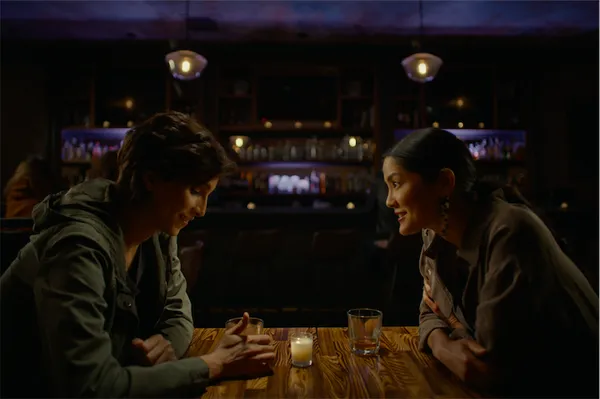Eye For Film >> Movies >> A Dangerous Cure (2014) Film Review
A Dangerous Cure
Reviewed by: Anton Bitel

"What's this movie about again? Harlem? So I guess it's a goddam foreign movie!"
So says Dr Helios (Sean Pritchard) to the unseen filmmakers who are interviewing him. Helios works at the 'nuthouse' that was the last abode of Savia Jones (Malinda Walford), a downsized paparazza whose own documentary eventually either drove her mad or showed her the light. "She was trying to solve some elaborate puzzle,' explains Helios. "The puzzle was the artsy fartsy movie she was making." Meanwhile, Savia's cameraman (Alexander Elisa), now effectively rendered blind by an infection, says of his director's work, "I've heard that the movie is fact, that it's a well-designed exploitation movie, bad reality TV. Go figure, right."

Kevin Jarvis' A Dangerous Cure purports to be a documentary about Savia's documentary - both films in fact being fictions (and metafictions) rooted in the realities of post-millennial New York - but the words of Helios and the cameraman make explicit Jarvis' intent to play upon received genres and to create something that defies easy categorisation. A kaleidoscope of real ground-level footage, overtly staged interviews (with broad performances to underline the artifice), and invented scenarios, A Dangerous Cure takes early 21st century anxieties - the gentrification of Harlem, the 2001 recession, 9/11, the inadequacies of public health, the scourge of drugs, the opportunistic predations of religion, the invasiveness of the media, and the inexorable rise of technology - and weaves from them an alternative gonzo history of the Noughties.
Savia was investigating a mysterious infection that had swept through Harlem, turning some into zombies, others into sex-maniacs, and leaving everyone desperate. This disease is pure fancy, albeit drawn from memories of the AIDS epidemic in the Eighties, but it allegorises something of the fear, loathing and helplessness that spread like a virus through Bush-era New York, especially in the African-American communities that felt abandoned by both government and economy. In pursuit of the conditions that led Savia to make her documentary, the filmmakers interview various victims of the infection (including Savia's one-time cameraman), as well as a manipulative cult leader, an 'underground pharmacist' and Helios.
No one could accuse A Dangerous Cure of being short on ideas - but for want of a coherent focus, Jarvis devotes far too much of his relatively short duration to the repetitive, poorly acted interviews which are the film's least appealing part. Without this dialectic of talking heads, however, it would be difficult to derive much sense from the hallucinatory kaleidoscope of rapidly edited imagery that makes the film feel precisely like an 'artsy fartsy' Godardian exercise. Perhaps the intention was to induce in the viewer something akin to the experience of infection - but this viewer was left, like Helios, not entirely in sympathy with a film whose precise point he failed ultimately to grasp. Its satire is not quite sharp enough, its pace not quite brisk enough, and for all its self-consciousness about a lack of generic fixity, in being neither this nor that, A Dangerous Cure ends up feeling like not much of anything at all.
Reviewed on: 21 Jul 2014
















